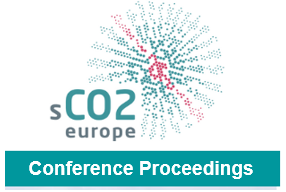Closed-loop supercritical carbon dioxide wind tunnel : design and components
Closed-loop supercritical CO2 cycles (sCO2) offer an innovative and efficient solution to achieve a reduction in primary energy consumption. CO2 has a low Global Warming Potential (GWP) compared to conventional fluorocarbon-based refrigerants, which makes it suitable for refrigeration cycles. Successful deployment of this technology is dependent on further experimental research. A significant effort is required to study the behavior of CO2 in the thermodynamic region close to the critical point, where sharp variations in thermophysical properties and real gas behavior are observed.
This paper presents the preliminary design of the LUTsCO2 facility. The experimental setup is designed to allow detailed studies on expansion and heat transfer of CO2 near the critical point. The transcritical refrigeration cycle is preferred as the experimental layout because of its operational flexibility and the commercial availability of components. Furthermore, a closed-loop cycle has the major advantage of running the loop continuously, which would not be possible with a blowdown test rig. The preliminary design of the main components is discussed with an emphasis on the heat exchangers. The latter are designed to operate by crossing the pseudo-boiling line, and they thus experience a considerable variation in CO2 properties. This phenomenon has a direct consequence on the design of the heat exchangers and requires the application of advanced heat transfer correlations that consider whether the CO2 is in a liquid-like or gas-like state. In addition, the supersonic test section is briefly described. This component comprises a converging-diverging nozzle, which performs a supersonic expansion from the supercritical region up to the two-phase region, followed by a normal shock wave, which allows the large kinetic head available to be recovered in the diverging section.
Vorschau

Zitieren
Rechte
Nutzung und Vervielfältigung:
Dieses Werk kann unter einer Creative Commons Namensnennung 4.0 Lizenz (CC BY 4.0)
Creative Commons Namensnennung 4.0 Lizenz (CC BY 4.0)
genutzt werden.
